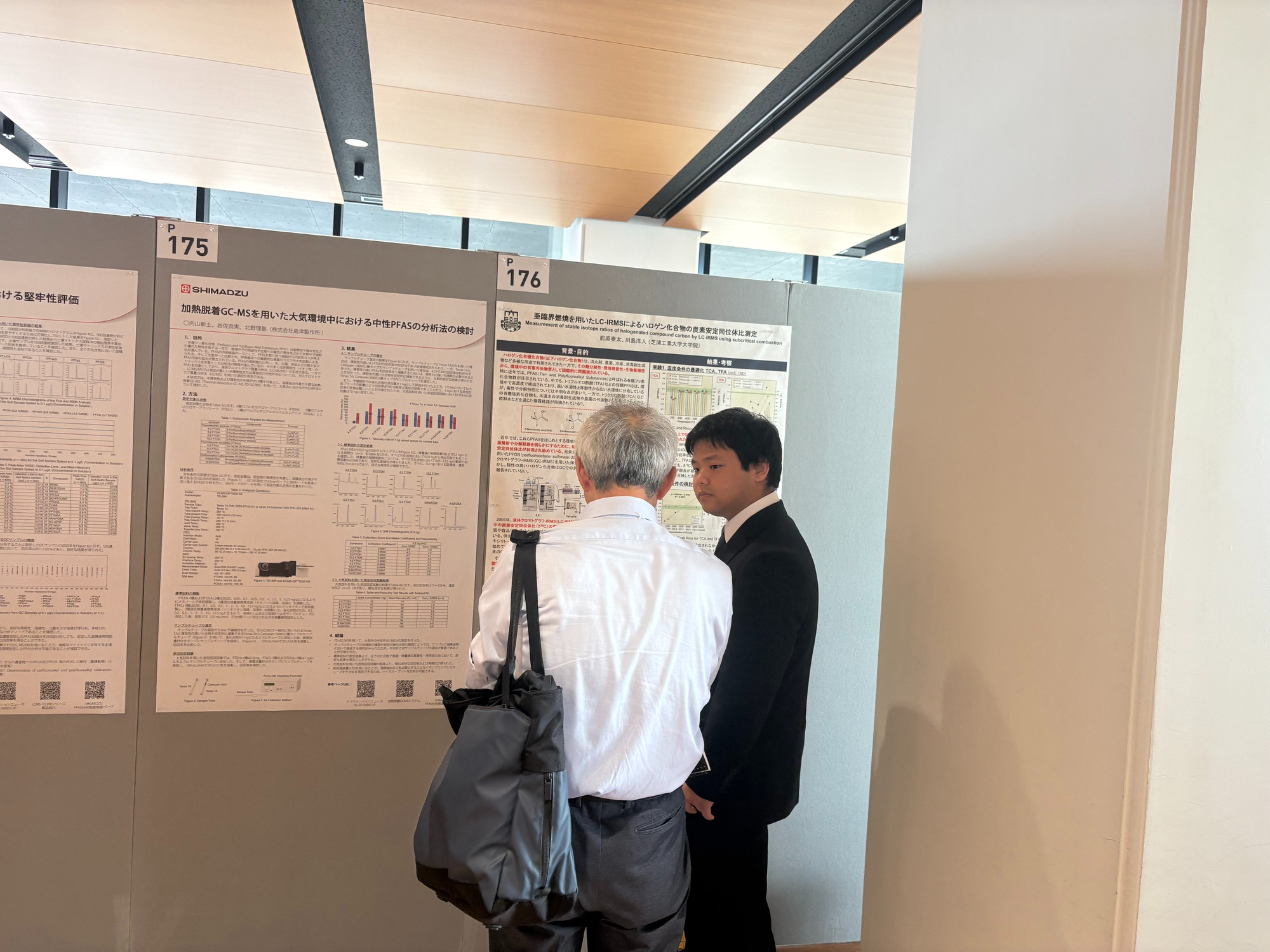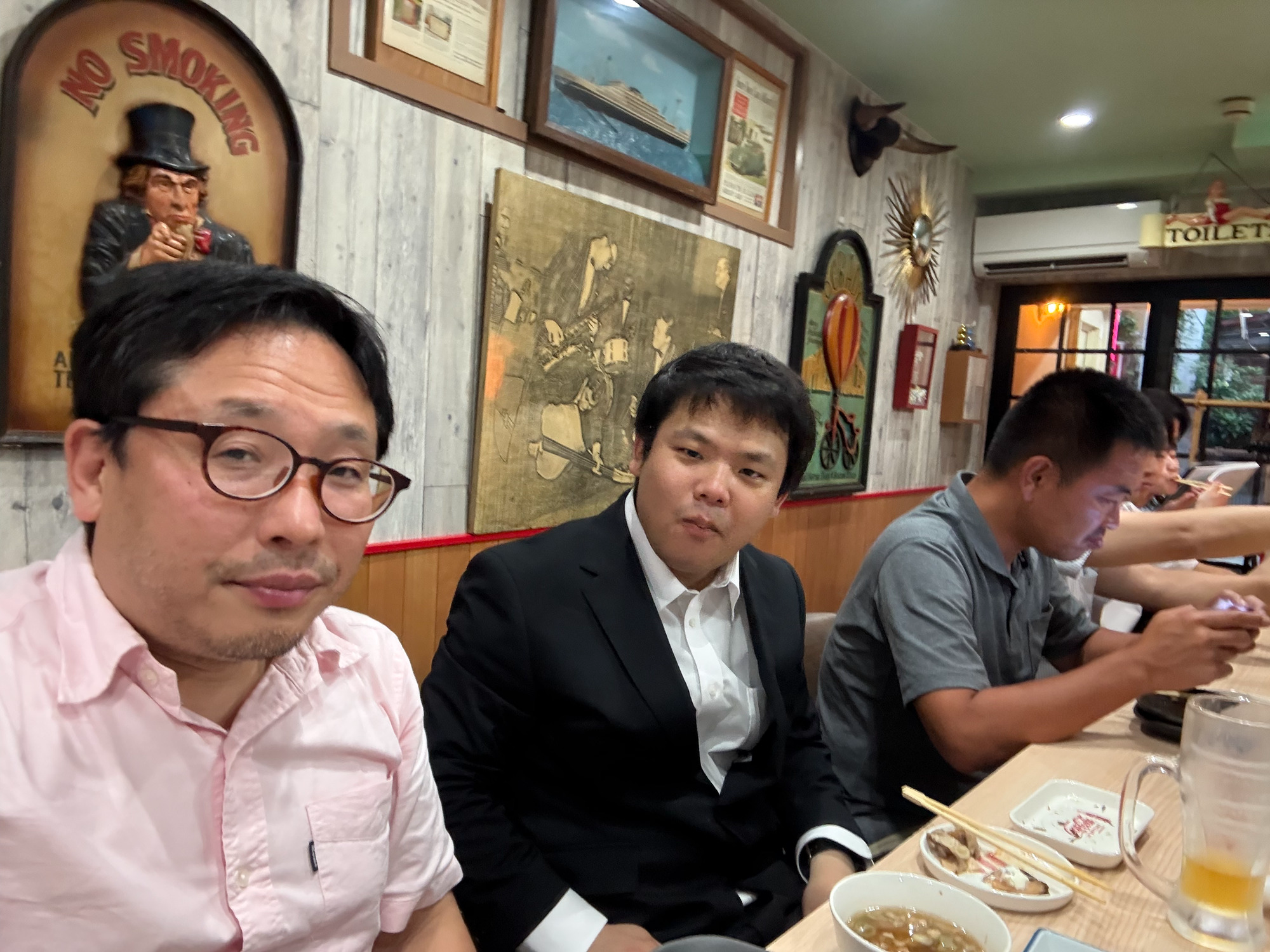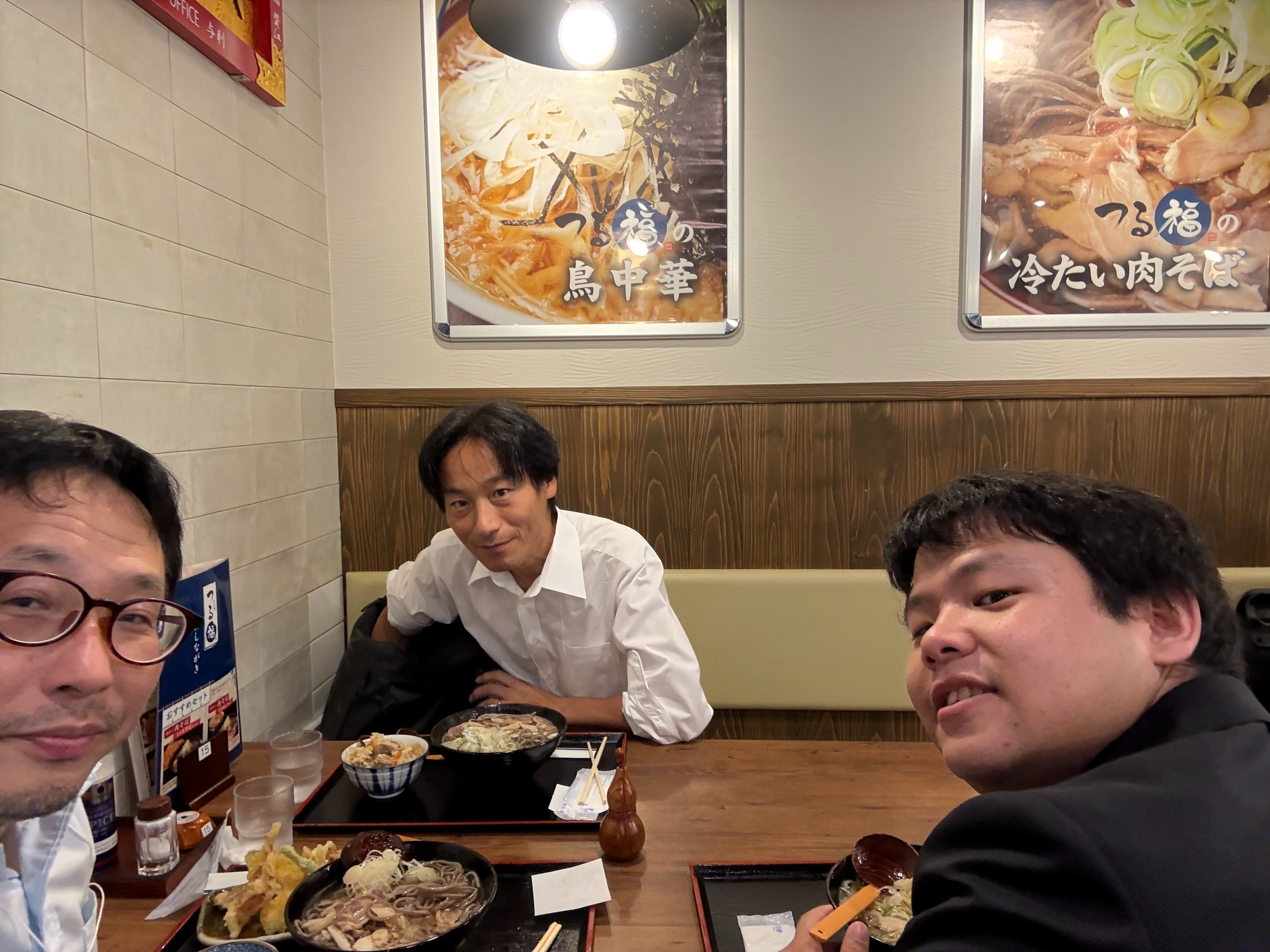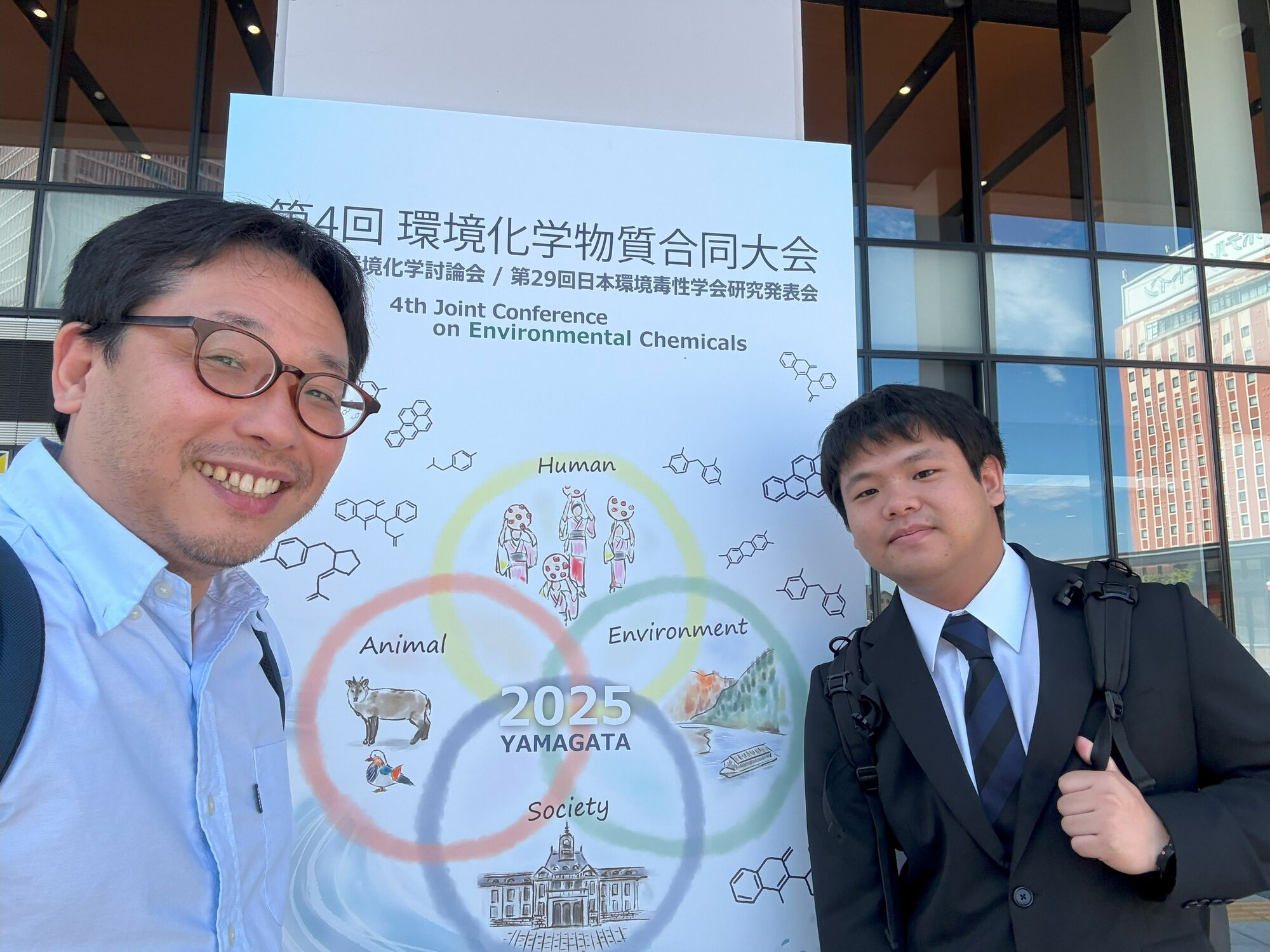News
Sota Maehara Presents at the 4th Joint Symposium on Environmental Chemical Substances

From July 15 to 18, 2025 (Reiwa 7), Sota Maehara, a graduate student in the Department of Systems Science and Engineering at the Graduate School of Engineering and Science, presented a poster at the 4th Joint Symposium on Environmental Chemical Substances, held at Yamagata Terrsa and Yamagin Kenmin Hall in Yamagata City.
The symposium was organized by the Japan Society for Environmental Chemistry, which was established in 1990 as the "Environmental Chemistry Research Group" and now operates as a general incorporated association. The society aims to promote the advancement of academic research by providing opportunities for information exchange and research presentations related to the interaction between the environment and chemical substances. It publishes the journal Environmental Chemistry, hosts lectures, and organizes the Environmental Chemistry Symposium, among other activities.
Comment from Sota Maehara
My presentation was titled "Carbon Stable Isotope Ratio Analysis of Halogenated Compounds Using LC-IRMS with Subcritical Combustion." In this study, we aimed to measure the carbon stable isotope ratios (δ¹³C) of halogenated compounds, which are widely distributed in aquatic environments and known for their persistence. The analysis was conducted using liquid chromatography–isotope ratio mass spectrometry (LC-IRMS).
We focused particularly on compounds like trichloroacetic acid (TCA) and trifluoroacetic acid (TFA), which are difficult to analyze with conventional combustion furnaces. By using a custom-built subcritical combustion interface, we sought to achieve high-precision, high-accuracy δ¹³C measurements of these halogenated compounds under high-temperature and high-pressure conditions. As a result, we achieved excellent analytical precision and accuracy of less than 0.3‰ for TCA. However, for TFA, incomplete combustion presented challenges, particularly in terms of accuracy and recovery rate.
This was my first experience attending an academic conference, and I was very nervous at first. During the poster session, many people came to see my presentation, and I received a variety of questions and valuable feedback from different perspectives. Some attendees, who were unfamiliar with stable isotope analysis, told me, "This is a fascinating study," which made me very happy and boosted my confidence.
Explaining my research also helped clarify its significance and challenges, giving me a clearer direction for improving my upcoming manuscript. I also realized the growing societal importance of PFAS (per- and polyfluoroalkyl substances), as many other presentations focused on this topic. I learned a great deal—from LC-MS/MS techniques for neutral PFAS detection, to new terms like legacy and emerging PFAS, as well as revisions to the Stockholm Convention and current analytical trends. The knowledge I gained was truly extensive and informative.
During the conference, I also had the opportunity to share meals with Professor Kawashima and several of his colleagues. Our conversations about research, the importance of writing papers, and approaches to scientific inquiry were particularly memorable and educational. Although I initially felt nervous talking to people with much more experience than me, everyone was kind and welcoming, which made the experience all the more meaningful and enjoyable. Participating in this conference significantly increased my motivation for research and deepened my commitment to publishing scientific papers.
Lastly, I would like to express my heartfelt gratitude to Professor Hiroto Kawashima for his guidance, Ms. Sachi Tanibo from the National Institute of Advanced Industrial Science and Technology for her research advice, all the lab members who engage in daily discussions and research with me, and Ms. Satomi Tada for her continuous research support.
 |  |
 |  |